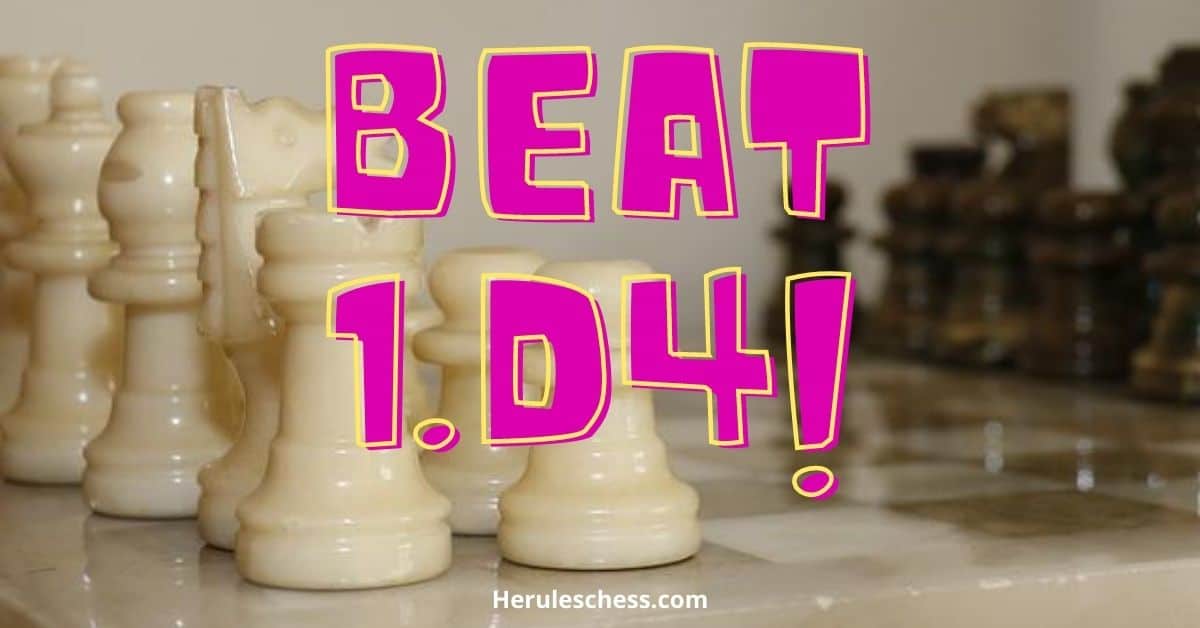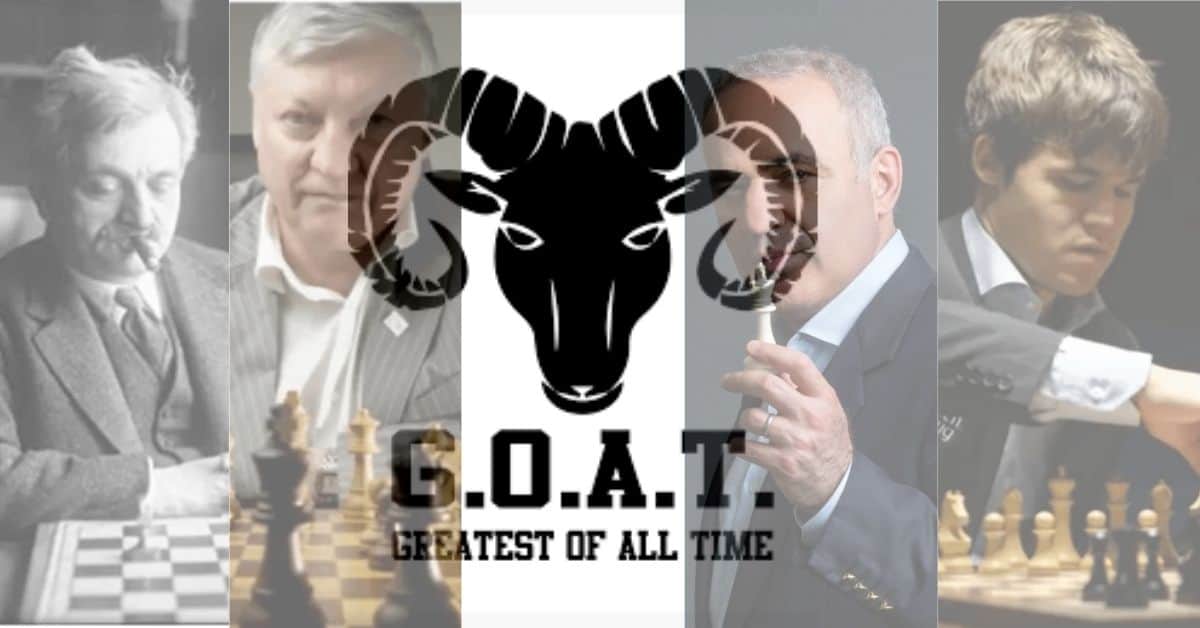Where was chess invented? The game of chess may have been invented in India as far back as the 6th century AD or in the 5th century AD. However, a few Historians have claimed that the game likely originated in China. Although based on the records, there is no clear answer.
On the other hand, there are some strong pieces of evidence that point to India that could justify the origin of chess. The game of chess further went on to spread to the country of Persia. It is believed that the Arabs conquered Persia and chess went on to spread across the entire Muslim world.
Finally, chess made its way to the Southern European Countries which gave birth to “modern chess” as we know it today.
As time went by, the game of chess had completely been revolutionized and had grown in popularity right across the globe. And by 1866, chess grandmaster Wilhelm Steinitz became the first official World Chess Champion for the event hosted in London.
From that historic date onwards, there have been a sea of World Chess Champions that have graced the scene of chess. It is still the most popular game of skill in the entire world.
Countries Claimed To Have Invented Chess
- China
- India
- Persia
Chess dates back more than 1500 years ago. That’s quite a long time if you think about it. Countries such as China, India, and Persia have debated on the origin of chess but have not shown 100% certainty in their claims. In the rest of this post, we will be discussing the history of chess along with where chess was actually invented!
Origin Of Modern Chess
The concept of modern chess became popular in Europe in about the 15th century. This period of chess was known as the Romantic Chess Era and the game ruled over several countries.
What Was the Romantic Chess Era about?
As early as the 1800s, the “romantic chess game” was characterized by a clever combination of moves and brutal sacrifices. Victory wasn’t too important as players were more focused on their creative expressions of the game. The style of playing was what really mattered the most rather than long-term strategies and calculating skills.
Later on, the Romantic Chess era gave way to the Dynamism era.
Dynamism Era of Chess
Now in the early 19th century, modern chess became a part of regular tournaments and chess championships. And, in the year 1886, the world held its first-ever World Chess Championship in London.
In the early 20th century, chess became a lot more civilized, and took a huge leap to establish a federation with standardized chess rules. Chess evolution reached its peak in the 21st century as the sport grew tremendously in popularity and computer software was developed to assist with analyzing games.
Although technology and computer engines have somewhat dampened the spirit of the game, players can enjoy competing in chess from all over the world through a single smartphone and internet connection.
The Evolution of Chess

Chess was claimed to have particularly originated in the Gupta Empire of India. Back then, the game was called Chaturanga which derived from the four military positions: Cavaltry, Chariotry, Infantry, and Elephantry. These names depict the modern chess pieces as we know them today: Knight, Rook, Pawn, and Bishop respectively.
Below is a table that shows modern chess pieces associated with their military position.
| Original Name | Modern Chess Pieces | Original Movement |
| Horse | Knight | Same as now (L-shaped) |
| Chariot | Rook | Same as now (vertical and horizontal any amount of squares) |
| Infantry/foot soldier | Pawn | Move one square forward only. Capture one square diagonally. Could only promote to queen. |
| Elephant | Bishop | Persia: two squares diagonally only. Could jump over pieces. India: two squares sideways or front and back (no more or less). Could jump over a piece. South East and East Asia: one square diagonally or one square forward. Just like the four legs and the trunk of an elephant. |
| Adviser | Queen | Move one square diagonally. |
| King | King | Same as now (one square in any direction) |
The movement of chess continued from India into the country of Persia. It became a part of Persian education and was soon adopted by many noble and elite classes. The Persians called it Chatrang which was renamed to Shatranj by Muslim Arabs due to pronunciation problems. During this era, several rules were passed in the chess game.
In the Persian language, the word Shah meant King. And whenever they would attack the other opponent’s king, they would say Shah Mat (helpless king) which also means checkmate as we know it today.
Simply put, the word checkmate is the final event of the chess game where the opponent’s king can not retreat or protect itself from an incoming attack.
Chess made its way to other neighboring countries with the help of Silk traders, pilgrims, and many other people. Steadily, the game became a part of the masses and not just for the noble and elite classes of society. It made its way to Europe by the 10th century and from then rapidly developed.
Where Did Chess Originate? – Summary
We know that chess originated in India somewhere around the 6th century, and we have evidence that a form of chess existed in central Asia in the 1st century. Some people claimed that the game might date back to the 15th century B.C. Nobody knows for sure how old chess is.
From the country India, chess quickly spread to Persia and then to Arabia, where powerful rulers patronized good players in the same manner that European nobility would later patronize musicians and artists. It was when the Moors conquered Spain that chess came to Europe in the 18th century.
Within 1-2 centuries, chess began to be played throughout the entire European empire including Russia. This was spread either by the soldiers or traders of that time.
Whereas the countries of East Asia adapted the rules of the game and the board to local customs, Europe adapted the Muslim form of chess and played it for 6 centuries without change. Then the game changed dramatically, turning chess from a stodgy game of slow advances into a game of lightning strikes and constant action.
In Europe, chess was played mostly by people in religious orders and royal courts. Not until the 9th century were clubs founded and tournaments organized, therefore giving chess a wider following. Soon thereafter, a World Champion was crowned, and professional chess players began to appear for the first time.
Chess Literature and Language Invented
Chess language began to proliferate as ordinary people came to love the game. Today chess is played in virtually every country in the world. With tens of thousands of competitions and hundreds of magazines, chess is the world’s most popular board game and one of the most beloved of all games.
Chess In Persia
Once chess made its way from India to Persia, the appearance of the chess pieces had been altered to a large extent since the times of chaturanga. The chess pieces went from depicting animals to abstract shapes.
The shapes were made abstract because, in the Muslim world, life-like pieces that brought upon images of idolatry were banned. These abstract images were usually made from simple clay and by carving out stones.
Chess In Eastern Asia
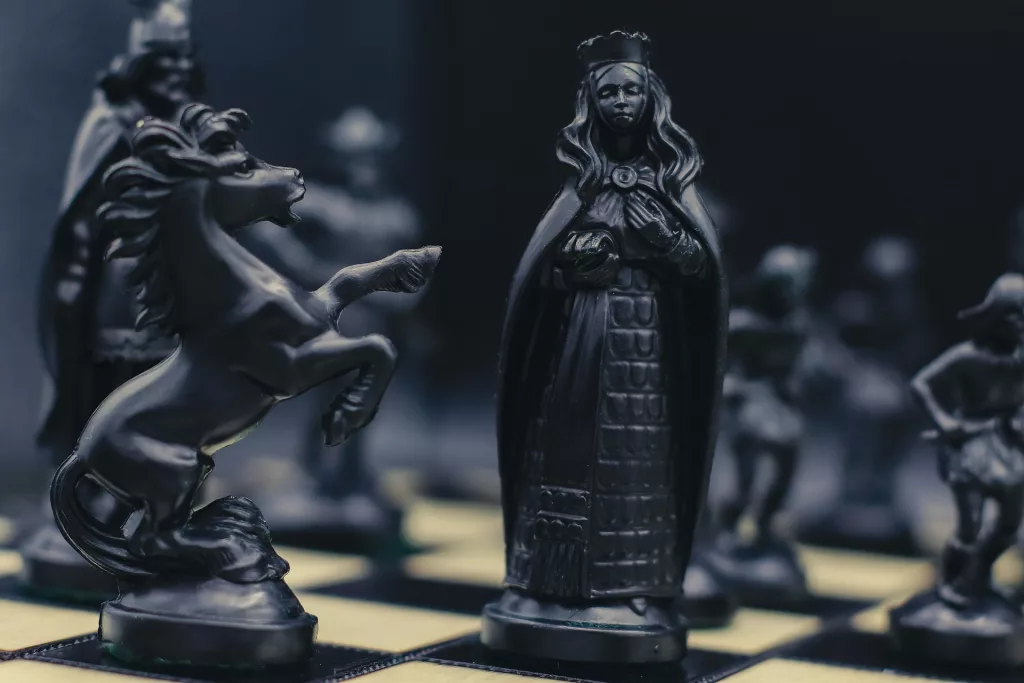
Chess made its way to many countries in Eastern and northeastern Asia. These countries include Thailand, Cambodia, China, Japan, Mongolia, and East Siberia. Let’s have a look at how chess was played in each country and how the game made its way through East Asia.
Chess in Thailand And Cambodia
The variant of chess in Thailand was called Makruk, and that of Cambodia was Ouk-Chatrang. These two variants were the closest living relatives to Chaturanga. They had the same non-checkered board, limited promotion, offset kings, and elephant-like bishop move.
Chess in China
In China, it is believed that Chaturanga (a.k.a chess) evolved into the game Xianggi. In the game of Xianggi, the pieces were placed at the intersection of the lines rather than in the squares as we know them today. The objective of the game still remained the same as Chaturanga (to render helpless the opponent’s king).
Xianggi was different from any other board game. The middle rank would represent a river. This section of the board was not divided into squares.
Chess in Japan
In Japan, the popular variant of chess was known as Shogi. This was transferred from India to China and finally made its way to Japan. The game of Shogi was quite unique. Here is how the game was played:
- Pieces that were captured could be reused and played to develop the captor’s forces.
- Pawns captured one square forward instead of diagonally.
- The size of the chessboard was 9 by 9. There was a gold general on the other side of the king, instead of the bishop as we know it.
Over time, the game of Shogi developed into a 15 by 15 board with the introduction of many new pieces including the rook, bishop, and queen of modern western chess. This was called Dai Shogi. Dai Shogi had many interesting plays. For example, the drunk elephant could promote to a second king, while the powerful lion piece had the ability to move or capture twice.
However, in the 15th century, the game once again evolved and was named Chu Shogi. This prominent game featured a smaller 12 by 12 board and the weakest pieces were removed. Sho Shogi was the final change to the game. It was very popular but was argued to be less prestigious.
Chess in Mongolia
Chess in Mongolia is now played following standard rules. The country of Mongolia was known to have recorded the early days of chess, particularly in inhabited areas.
How Mongolia named the chess pieces:
| King | Lord |
| Queen | Dog ( Guardian ) |
| Bishop | Camel |
| Knight | Horse |
| Pawn | Puppy |
Their variant of chess was called Shatar which consists of a large 10 by 10 board.
Chess in East Siberia
In Siberia, Chessmen have been collected from the Yakutat tribe in Alaska. These Chessmen had no resemblance to the European chessmen. Therefore, this had to be a part of a chess tradition coming from sections of Siberia.
Chess in the Arab world
From India to Persia, chess finally made its way to the Arab world. The name of the game was later changed to Shatranj. Chess then made its way to Western Europe via Spain.
The type of chess played in Europe was quite modern involving modern moves of queen, bishop, and castling as we know it today. This type of European chess found its way into the Islamic world via trading.
The game grew in popularity, and it was used in writing at that time and was played by both noblemen and regular people.
Chess in Russia
Chess is believed to be popular in Russia for more than 1000 years. In Russia, chess is mentioned in folk poems as a prominent game and is documented in the old Russian bylini.
Archaeologists that visit Russia found that the chess game has been found in regions of Old Russia. Chess was named Shakhmaty in Russia. Today chess is played all over Russia and has a very high status. It’s even being introduced as a school subject in all primary schools.
Chess In Europe
The variant of chess played in Europe was called Timur or Tamerlane chess. This complicated game involved each pawn having a particular purpose and an extra piece.
White and Black were the names given to both sides. However in earlier European chess, red and black were the names given to each side because those were the only two available colors of ink when handwriting and drawing a chess game layout.
Around the 13th century, chess became more than just a game. People were now playing chess for money and this practice became so widespread that Louis the 9th of France issued an ordinance against gambling in 1254. However, this ordinance was later neglected by the general public even the courtly society.
Table showing the different countries and their variant names of chess.
| Country | Variant Of Chess |
| India | Chaturanga |
| Persia | Chatranj |
| Arab World | Shatranj |
| Japan | Shogi |
| Europe | Timur/Tamerlane chess |
| Russia | Shakhmaty |
| China | Xianggi |
| Thailand | Makruk |
| Cambodia | Ouk-Chatrang |
Nobel Historical Figures
A lot of historical figures were quite avid chess players from King Ferdinand to Queen Isabella of Spain, not to mention Euler (well-known mathematician), and Benjamin Franklin.

For such famous high-class figures, chess was not just for amusement and a hobby. Rather, it was a game that allowed them to hone valuable life qualities such as perseverance, vision, and circumspection.
The Origin of the Chess Pieces
Originally, the chess set consisted of an elephant instead of a bishop and a prime minister instead of the queen as we know it. When chess arrived in Southern Europe, the people changed the name and the design of the chess pieces into something that depicts their current lives. Even in today’s era, there are places like India that refer to the rook as “elephant” and the bishop as “camel”. These are animals that are a part of their cultural activities.
Historical Chess Sets
1. The Lewis Chess Set
A very old chess set was discovered in Northwestern Scotland off the skirts of Hebrides on the Isle of Lewis. The pieces that were discovered were believed to have been the earliest examples of European chess pieces and were made in Norway in the year 1200 CE. These historical chess sets are not for sale and are currently located in London British Museum.
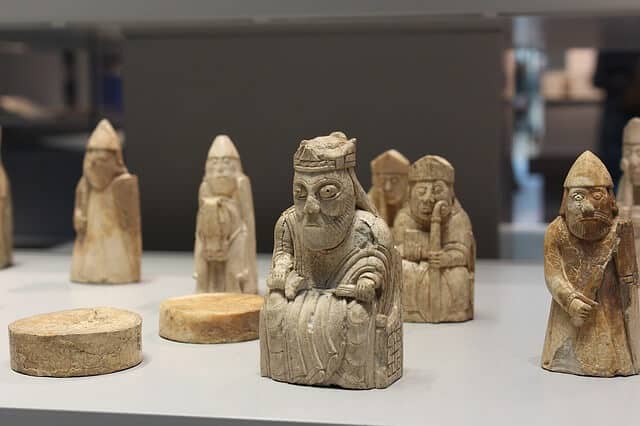
Don’t feel down as I know you would love to get your hands on the Lewis chess set. Today you can own a high-quality, nicely weighted, solid replica of the famed Isle of Lewis chessmen. Yes, you heard right! It’s a chess set that rings true in every collection as a solid piece of chess history.
Click Here to get the Isle of Lewis chessmen while stocks last (Order from the best retailer store, Chess House!)
2. The Staunton Chess Set
The Staunton chess set is what we know today (King, Queen, Rook, Bishop, Knight, and Pawns). The Staunton chess set was made as a universal solution since many different countries that were competing against each other could not understand the design of the chess pieces.
Many countries had different cultures, wealth, and languages which meant that the chess sets would have varied in design. It was in 1840 that John Jaques, a London company, produced a universally recognizable chess set that everyone could understand and play with. It became known as the Staunton set, named after Howard Staunton, an English chess master.
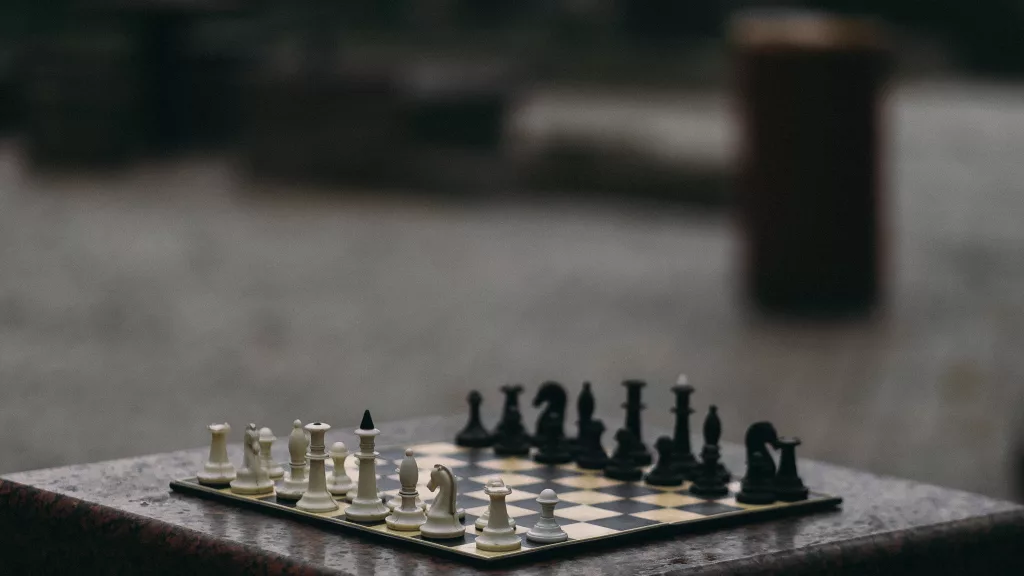
Grab hold of this beautiful chess set at an affordable price. Just click this link
Summary Of Where Was Chess Invented – Frequently Asked Questions
Who Invented Chess?
Chess is believed to be invented by the Indians in the 6th century. They named it Chaturanga which translates to the four military divisions: cavalry, chariotry, infantry, and elephantry. It was later picked up by the Persians and revolutionized into modern chess as we know it today.
When did Chess begin?
Chess originated in the 6th century in India’s “Gupta Empire. Chess later moved from India to Persia, and soon became an important part of Persian education (for the noble and elite classes).
Who Is the father of Chess?
The father of chess is known to be Wilhelm Steinitz who was crowned in 1866 for becoming the first official World Chess Champion which was held in London. Since then, many world champions have graced the scene of chess, and the game is now widely known globally.
What is the oldest board game?
The oldest board game is known as the Senet which was located in the Predynastic and First Dynasty burials of Egypt.
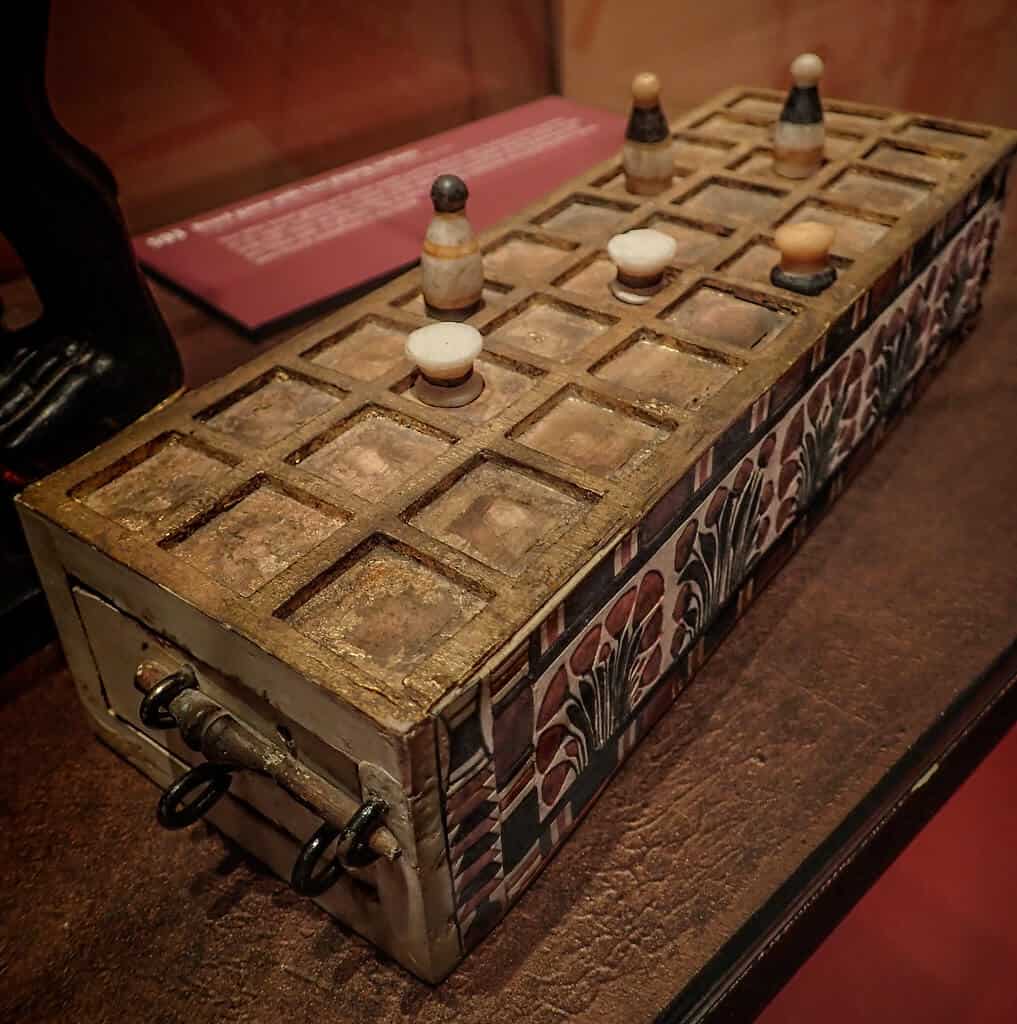
The oldest European chess set is called the Lewis chess set which was discovered in In 1831, on the Isle of Lewis, in the Outer Hebrides, off northwestern Scotland. The Lewis chess set was the earliest European set and is thought to have been made in Norway in about 1200 ce.
Posts you may like: Is Chess a sport or merely a game?




